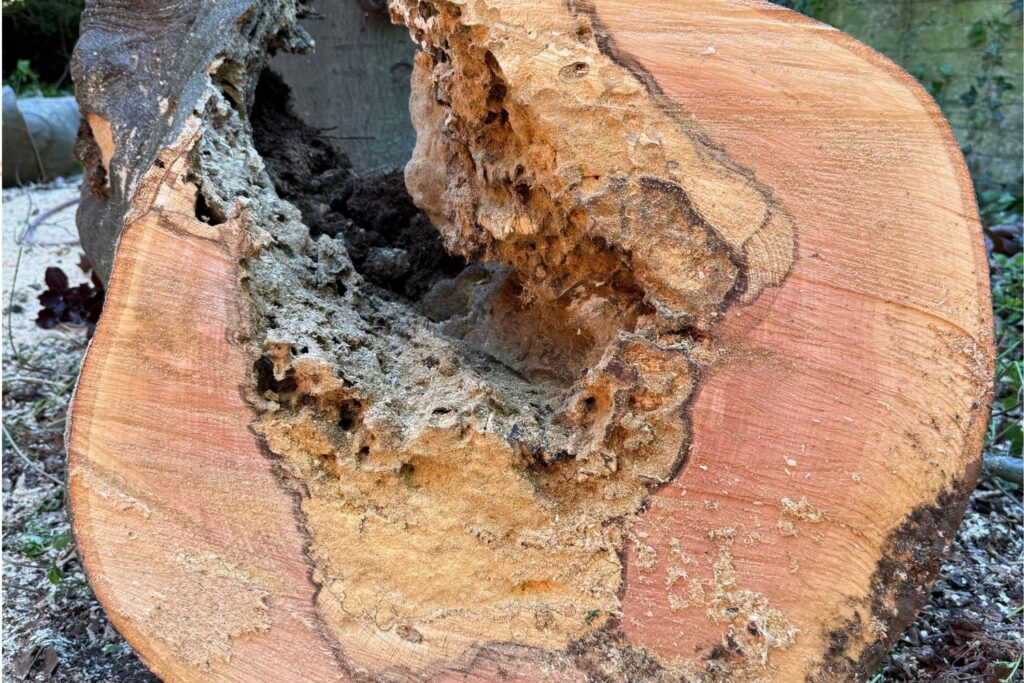In a city like London, where green spaces meet dense urban infrastructure, managing trees requires careful planning and expert insight. Tree surveys are a key tool for ensuring trees are preserved, risks are minimised, and development can proceed responsibly.
Whether you’re a homeowner, architect, property developer or council officer, understanding the purpose and process of a tree survey is essential. This guide explains what tree surveys involve, when you need one, and what a professional survey delivers.

What Is a Tree Survey?
A tree survey is a detailed, professional assessment of the trees on a specific piece of land. It’s carried out by qualified arboriculturists and forms the foundation for informed decisions regarding tree preservation, removal, or management.
Tree surveys are used in various contexts:
- Pre-construction and planning applications
- Tree risk and safety inspections
- Mortgage and insurance approvals
- Tree preservation and conservation
- Land and estate management
How Tree Surveys Differ by Purpose
Not all tree surveys are the same. The type and scope depend on the reason for commissioning one:
- BS5837 Tree Survey – Required for planning applications involving development near trees
- Tree Condition Report – Focuses on health and structural integrity
- Tree Risk Assessment – Evaluates the potential hazard trees pose to people and property
- Mortgage/Insurance Report – Supports lending decisions and insurance policies where tree risk is relevant
When Is a Tree Survey Required in London?
Tree surveys are a legal or planning requirement in many situations, particularly in a densely built environment like London.
Development and Planning Permission
Tree Preservation and Conservation Areas
Local planning authorities require a BS5837:2012-compliant tree survey when submitting a planning application for work that could affect nearby trees. This is particularly important when:
- Trees are protected by a Tree Preservation Order (TPO)
- The site is in a Conservation Area
- Construction is planned within the root protection area (RPA) of existing trees
You must submit a tree survey when applying for work on trees protected by law. This applies to felling, pruning, or works within a designated Conservation Area.
Public and Commercial Land Management
Organisations responsible for parks, schools, estates, and public buildings often commission regular tree surveys to fulfil their duty of care under the Occupiers’ Liability Act and HSE guidance
What Happens During a Tree Survey?
A professional tree survey typically involves several steps, tailored to the type of report required.
Tree Identification and Measurement
Each tree is recorded with information such as:
- Species (common and botanical names)
- Height, stem diameter, and canopy spread
- Age class (young, mature, veteran)
- Proximity to buildings, utilities, or public areas
Health and Structural Condition Assessment
The arboriculturist examines the tree’s:
- Crown and branch structure
- Trunk condition (e.g. cavities, cracks, fungal fruiting bodies)
- Leaf health and growth
- Root flare and surrounding soil condition
- Advanced decay detection tools such as resistograph drills or sonic tomograph may be used for suspected internal decay.
Risk Evaluation
The potential for tree failure and the presence of high-risk target zones (e.g. roads, buildings, footpaths) are assessed to determine hazard levels.
Mapping and Documentation
A Tree Constraints Plan (TCP) is often produced, showing:
- Tree positions
- Root Protection Areas (RPA)
- Areas of conflict with proposed development
The final report includes management recommendations based on the findings.
What Is a BS5837 Tree Survey?
A BS5837 survey is the industry standard for development sites. It ensures tree protection is considered at every design stage and helps developers avoid delays, refusals, or fines.
What It Includes
- Tree Schedule with full classification and retention value
- Tree Constraints Plan (TCP)
- Guidance on protection measures
- Input into design layout, drainage, and foundation planning
Planning Support Services
- Arboricultural Impact Assessments (AIA)
- Arboricultural Method Statements (AMS)
- Tree Protection Plans (TPP)
- Site monitoring and compliance checks

Why Choose a Professional Consultant in London?
London’s diverse tree population and strict planning controls demand specialist expertise. A qualified arboricultural consultant ensures:
- Full compliance with local and national regulations
- Accurate, unbiased assessments
- Timely delivery to meet planning deadlines
- Practical advice tailored to urban environments
What to Look for in a Tree Survey Consultant
- Relevant qualifications (e.g. LANTRA, Level 4 or 6 Diploma in Arboriculture)
- Professional Indemnity Insurance
- Experience with your local planning authority
- Familiarity with London-specific constraints and tree species
Common Issues Identified During Surveys
Tree surveys often reveal problems that aren’t obvious from the outside. Some examples include:
- Decay fungi such as Ganoderma or Armillaria
- Root conflicts with underground utilities or foundations
- Canopy instability in exposed or overextended branches
- Poor pruning practices or historical damage
- Tree-related subsidence or heave affecting buildings
- Early detection allows for appropriate intervention — from pruning and bracing to removal, if necessary.
The Role of Tree Surveys in Responsible Tree Management
London trees are essential to the landscape, air quality, and biodiversity, professional tree surveys play a critical role. They protect people, property, and the trees themselves.
Whether you’re planning a development, managing a school site, or buying a home near mature trees, a well-prepared tree survey is a small investment that delivers long-term peace of mind.
Choose a qualified London-based consultant who understands the local regulations, species, and urban challenges. With their expertise, you can make informed decisions that benefit both your project and the environment.
Call 07709 051535 or Email info@londontreesurveyconsultants.co.uk to Book Your Tree Survey Today






